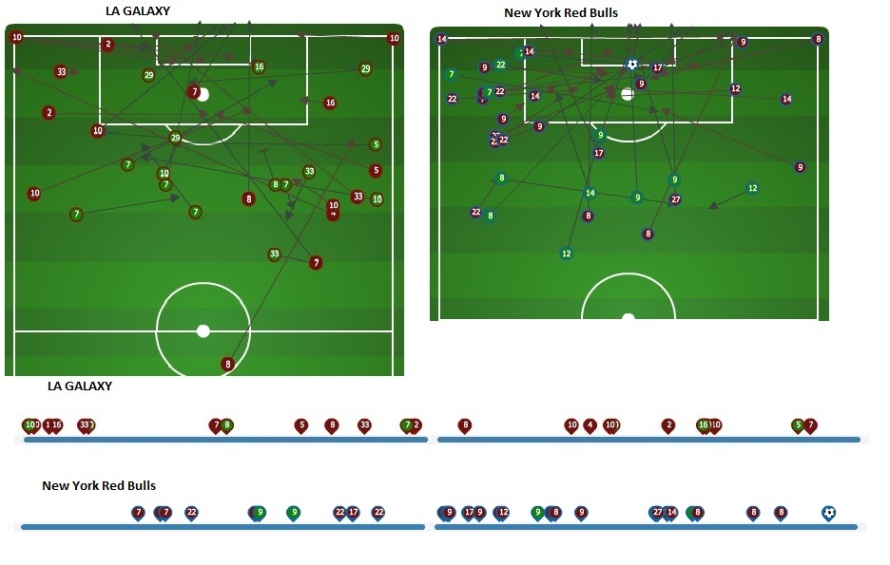DC United Score Alain Rochart On The Cheap
/Today, the Vancouver Whitecaps traded defender Alain Rochart, their starting left back, to DC United for a second-round selection in the 2015 MLS SuperDraft as well as an conditional pick in 2016. Vancouver gets a rough lottery ticket, a little bit of freed up cash and the United get a veteran defensive back. It's not specified if Vancouver will still be on the hook for Rochart's salary, but considering the lack of return, for the basis of this work I'm going to assume that to be the case. The trade on the peripherals seems rather odd and strikes a few questions in my mind as to why this move was even made and what EXACTLY did each team acquire.
Looking at the Swede, Alain Rochat, DC United obviously get a guy who is average positionally in the league. He's not brilliant by any stretch of the imagination, but he's not bad at what he does. He's going to give you minutes; he's given the Whitecaps back-to-back seasons of nearly 2,500 minutes. While being able to provide minutes is great, the larger issue is the quality of those minutes. How does he compare to the rest of the league?
According to the site Whoscored.com they have him listed as the 9th best starting left back in MLS and is the 8th highest paid. So over all the price tag pretty much suits what he costs, though the average cost of an outside back is roughly $100k.
| Point Total | Team | Name | WhoScored Rating | Minutes | Wage |
| 24 | RSL | Chris Wingert | 7.12 | 508 | $160,000.00 |
| 11 | Chicago | Gonzalo Segares | 7.09 | 990 | $155,000.00 |
| 20 | LA | Todd Dunivant | 7.12 | 608 | $150,000.00 |
| 22 | Portland | Michael Harrington | 7 | 1159 | $140,000.00 |
| 18 | Seattle | Leo Gonzalez | 7.47 | 882 | $135,000.00 |
| 15 | San Jose | Justin Morrow | 6.8 | 1174 | $130,000.00 |
| 25 | New York | Roy Miller | 7.07 | 877 | $124,000.00 |
| 16 | Vancouver | Alain Rochat | 7.02 | 969 | $120,000.00 |
| 11 | Chivas | Wálter Vílchez | 6.64 | 340 | $117,000.00 |
| 22 | Houston | Cory Ashe | 6.91 | 1215 | $101,000.00 |
| 5 | DC United | Daniel Woolard | 6.72 | 719 | $100,000.00 |
| 22 | Kansas City | Seth Sinovic | 7.13 | 1270 | $90,000.00 |
| 28 | Dallas | Jair Benitez | 6.83 | 1106 | $90,000.00 |
| 19 | New England | Chris Tierney | 6.93 | 658 | $82,000.00 |
| 26 | Montreal | Jeb Brovsky | 7.11 | 990 | $80,000.00 |
| 14 | Columbus | Tyson Wahl | 6.88 | 1165 | $76,000.00 |
| 8 | Toronto | Ashtone Morgan | 6.2 | 469 | $60,000.00 |
| 8 | Toronto | Logan Emory | 6.7 | 238 | $48,000.00 |
| 22 | Philadelphia | Raymon Gaddis | 6.88 | 1339 | $47,000.00 |
| 20 | Colorado | Chris Klute | 7.42 | 956 | $46,000.00 |
Interestingly enough, Rochart matches up pretty well with Portland Timbers left back Michael Harrington, who costs just a nudge more and is rated very similarly. Both possess the ball well and deliver smart short passes out of the back while neither are very strong at tackling.
This comparison is interesting simply because the Timbers acquired Harrington from Sporting Kansas City this past off-season. While the details of the deal aren't disclosed to the public, we know that it centered around allocation money and a guess in the $75K range isn't crazy.
So we can say the going rate for which DC United paid for is roughly $75K in "specialized "cap space. That's on top of the money that is saved from moving the individual. DC United paid a draft pick, potentially two, depending on the circumstances--of which we have no idea. So let's just work with the understanding that they are only giving up a second round pick in two years.
This is a little tricky because of the fact that we don't necessarily know what overall pick DC United will be giving up. While this matters only for the sake of history and being able to create context based upon past experiences, it only minimally limits our understanding of the value of this pick.
In the 2013 Superdraft, a second-round pick's average contract was worth roughly 35K, and that's specifically for a young-ish sort of player that qualifies for the draft. While that potentially could be of some value, you can see players such as Chris Klute, Chris Tierney and Seth Sinovic as great examples, as it could lend itself to assisting to provide some roster flexibility. It's not nearly as lucrative as any type of allocation money.
DC United got a serviceable upgrade and helped solidify a back line that has had a gaping hole in it this past season, while paying nearly nothing for it. On the other hand, the Whitecaps presumably cleared 120,000 dollars off their roster and got a low-risk/medium-reward lottery ticket, and potentially two of them. However, they did this at the cost of downgrading one of their team's strengths.
I can't say that this was a bad move for the Vancouver, but it's an all-too-perplexing one for a team that is only sitting 4 points out of playoff position in the table. Kudos to DC United for making a cheap and smart purchase. At least they did something with their season.




